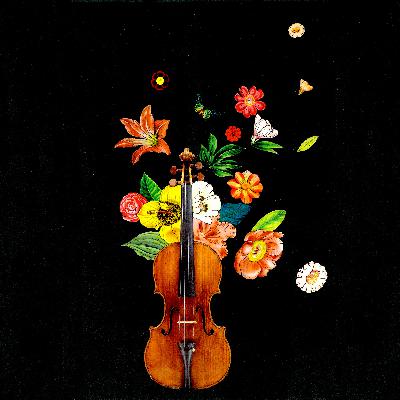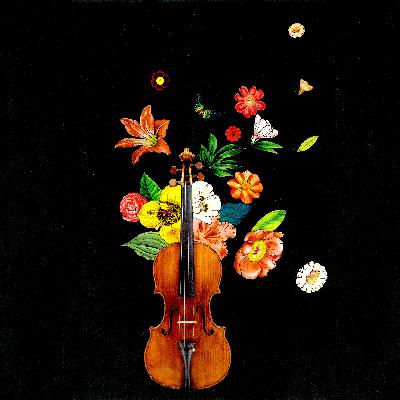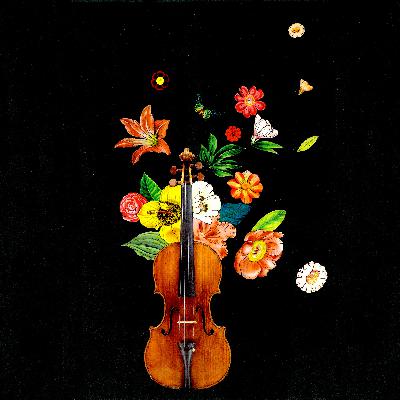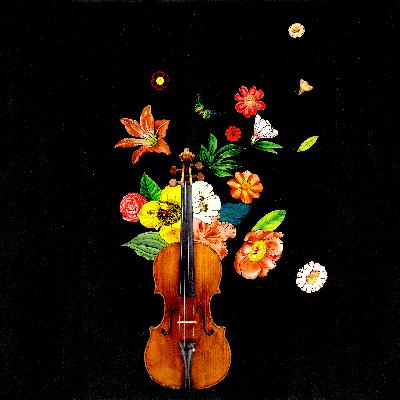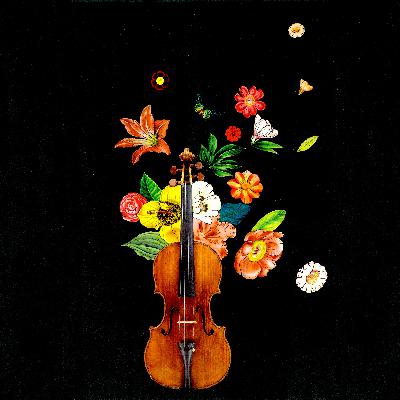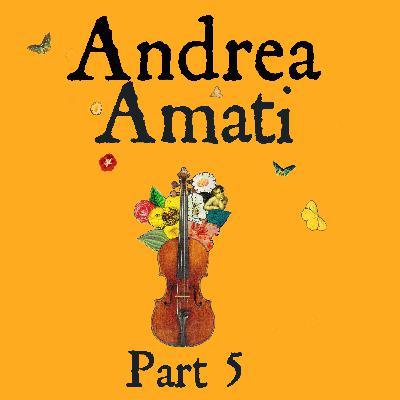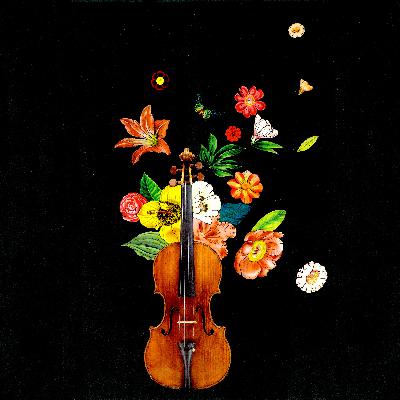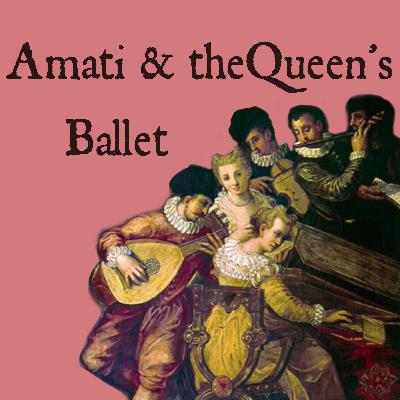Ep 4. Unveiling the Secrets of Andrea Amati and his violins: Part 1
Description
The Amati family; in this Series we explore the life and legacy of Andrea Amati, the masterful craftsman behind some of the world's most revered violins. In these episodes we delve into the fascinating history of Amati's life, his revolutionary techniques, innovations, and the enduring impact of his work on the world of music.
Through interviews with experts in the field of history, instrument-making, and performance, we uncover the secrets of Amati's unique approach to violin-making, from his choice of materials to the meticulous attention to detail that went into each instrument. We also explore the rich cultural and historical context that shaped Amati's work, and the role that his violins played in shaping the sound of the Renaissance and beyond.
Transcript
Andrea Amati Part I
A traveller passing through northern Italy's Lombardy in the 16th century would be struck by its beautiful plains, fertile meadows and abundance of grains and livestock. Large fields planted with wheat, alternated with meadows crossed with an intelligent system of irrigation ditches, and long rows of trees growing around the edges of the fields gave it that typical Po Valley plantation look.
In the distance, on the northern bank of Italy's longest river, the Po, lay the bustling city of Cremona. East of Milan, on the flat Padana plains, it was described as being “rich in men and traffic”, an important commercial hub, and here you would find a strategic river crossing.
In this city lived a handful of noble Cremonese families, owners of almost all the land in the surrounding countryside’s, cultivated by peasants still living under a feudal system. The crops they grew, of flax, wheat, millet, rye, and rice, would be transported into the city to feed its citizens. After Milan, Cremona was the largest and most important city in the state, bursting with tradespeople and merchants.
Almost 50 percent of its inhabitants are artisans, and the wealth of the city is substantial. In the Duchy of Milan, Cremona contributes as many taxes to the Duke's coffers as the rest of the provinces combined, making it a noteworthy place indeed.
This was an era in which transport via water was 20 times cheaper than overland. Goods and people were frequently passing through the city on barges, often coming from Venice, then on to the markets of all of Europe with their wares. It was a transient place, an inland port even, where many people would pass through, stop and stay a while, then move on.
But for those who stayed there, life was never dull. In the year 1505, a Cremonese artisan called Gottardo Amati and his wife welcomed a little baby boy into the world. They named him Andrea Amati. As was often the custom, their son would one day learn a trade similar to that of his father. Of this his parents were fairly certain.
What they couldn't have known was that this child would grow up to be the first in a great dynasty of violin makers, whose instruments would grace the salons of royalty and become proud acquisitions of noble families across Europe, influencing every violin maker that would come after him. Whether they realized it or not.
The Amatis.
You may or may not have heard of this violin maker. But hopefully by the end of this series you will be like, Amati, yeah sure. Which one? The father, the son, the brothers, the grandfather? Because yes, there were a bunch, five to be precise, spanning four generations and they all lived in the northern Italian city of Cremona.
In these episodes I'll be looking at the Amati family of Violin Makers, their extraordinary story that spans almost 200 years and the world changing events that moved their lives. I started by talking to someone who knows a whole lot about this family. Violin maker, expert, author, and researcher in Milan, Carlo Chiesa.
Carlo Chiesa
I'm a violin maker and a restorer and the researcher on the history of violin making.
To find the Amati workshop, first we must go to the city of Cremona. The Amatis are all connected and if you look at the history of the Amati family of violin makers, that's the history of the Cremonese making for about two centuries because the Amati workshop was the only serious workshop in Cremona for about 200 years.
When you speak of Cremonese making, of course you must start with the Amati workshop.
Linda Lespets
In the 1500s, Cremona was a city full of life, its streets filled with the sounds of clanging hammers and the buzz of conversation. It was home to a thriving community of artisans, each with their own unique skills and talents. Half the population found themselves in trade, but the other half worked and survived by supplying manual labour for the domestic market.
There were servants, shopkeepers, coachmen, navigators, bankers, blacksmiths, carpenters, woodsellers, farriers, instrument makers, the list goes on.
I spoke to Benjamin Hebbert, Oxford based expert, dealer, author, and international man of mystery.
Benjamin Hebbert
So, Cremona's actually a very interesting city, if you think of Italy and, you know, Italy's got the sort of long boot kind of going down into the Mediterranean and then you've got the sort of, the top of Italy is sort of, kind of oval shaped, like the socks sticking out of the top of the boot.
And if you take that area, the great landmass of Northern Italy, at the top and at the west, it's lined by mountains. And then you've got the Adriatic Ocean with Venice on the other side. And right going through the middle is the River Po. And that really connects everything. The Po becomes, by the time you get to the middle of Italy, it's a very wide river.
So your last stone bridge is at Piacenza. It starts at Trieste, goes to Piacenza. And then when you get to around about Cremona, there's a number of islands, very swampy islands. And the river kind of kinks a little bit so it slows and it becomes a little bit narrower because of the swamps and that's not good enough to put a bridge on it but it's controllable so that you can put a pontoon bridge over the river so at certain times of the year you've got a huge bridge for trade for taking armies over and that's really the history of northern Italy is armies going one way or another.
Cremona is that point right in the middle of Italy where you can get huge amounts of trade, commerce, anything can travel through and get over the pontoon bridge and of course that pontoon bridge doesn't exist anymore it's even difficult to see on maps because in maps people draw land features and stone buildings they don't do disposable bridges.
So right away from the Roman times, that's what Cremona stands for. If you go to Cremona, you'll see that there's all sorts of arguments, whether it's the highest tower in Italy, the highest tower in Europe, but the cathedral has this enormously high tower. And that's because actually from the top of the tower, people wanted to be able to see over the river to whatever was coming from the other side. There was a massive fortress in Cremona, towards the western edge. And one thing that you'll miss when you go there is that because of the way that the river's silted up, it's now about a mile. Maybe two miles from the city walls.
Linda Lespets
Carlo Chiesa talks about cultural life in Cremona and how it was placed in the dutchy of Milan.
Carlo Chiesa
Cremona was a large town in northern Italy in the plain, so in a very quiet and rich environment. But the problem was that, Cremona was never, the main center of a state. It was a large city in a rich area without a court and without a university. So it was a quiet place, so to say. The noble families from Cremona, had a, usually a palace, a building in Milano. So Milano was the important city and Cremona was just, an outskirt, so to say, there was no high cultural life in Cremona for many years, and at that time, that was the situation.
So it was, I would say, a quiet place to live, but for the fact that sometimes it happened that armies arrived from one place to going to another and there were wars and riots and things like that. So, I think life was quite, easy in Cremona, but not, we must not, consider that as we see today, it was not safe. There was never a safe idea of life. That is the main difference in my opinion. It was the seat of rich families, very rich families. It was a very rich environment, but since there was no court the cultural life was never as important as it was in even smaller towns which had rulers and small courts, let's say Parma or Mantua or Piacenza even. These are cities smaller, much smaller than Cremona and less rich than Cremona but situated just 40, 60, 80 kilometers away of Cremona. But they had a richer cultural life because there were kings or princes or counts or some people who took care of the court.
Linda Lespets
Cremona was a booming city on the rise. Around 35, 000 people lived there. The size of it meant that merchants would not accumulate fortunes like those in Florence or Venice. But what we do find is a healthy middle class. earning a good living for themselves. To get an idea of the atmosphere, in the mid 1500s, 50 percent of people living in Cremona were artisans, 10 percent nobility, 20 percent were classed as just poor, and the rest worked for the others.
Zooming into the artisan class of Cremona, we find that sixty percent of them worked in the thriving textile industry. Cremona was known for its fustian, that's a heavy cotton fabric often used for men's clothing and padding. The Cremonese fustian had dazzling colors and beautiful designs. Cremona was making 100, 000 pieces of this fustian that was exported to Venice and beyond the Alps.
This well connected city thrived t

